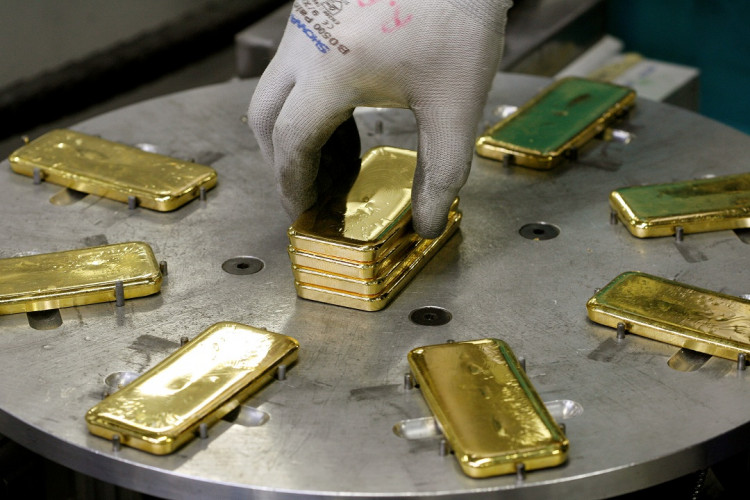Gold prices retreated on Monday as the U.S. dollar remained strong, causing investors to reassess their expectations of a significant interest rate cut from the Federal Reserve in the near term. Spot gold slipped 0.3% to $2,645.00 per ounce by mid-morning in New York, pulling back from its recent record peak of $2,685.42 reached in late September. U.S. gold futures also eased slightly, down 0.1% to $2,664.70.
The dollar's rally has been a headwind for gold, making the precious metal more expensive for international buyers. "The dollar strength is the short-term headwind at this point that's preventing new all-time highs for gold," said Peter A. Grant, vice president and senior metals strategist at Zaner Metals. He added, "I still see short-term potential to $2,700, and the longer-term objective at $3,000 remains valid due to safe-haven demand from geopolitical tensions and political uncertainty as we get closer to the U.S. election."
Gold is traditionally viewed as a hedge against both economic and geopolitical uncertainties, gaining particular appeal during periods of low interest rates. However, with the latest employment data signaling that the U.S. economy remains relatively robust, traders are now less convinced that the Federal Reserve will implement significant rate cuts in November. Market sentiment now suggests an 86% probability that the Fed will opt for a modest quarter-point rate cut next month rather than a more aggressive reduction.
Despite gold's pullback, some analysts believe the metal's outlook remains positive, driven by ongoing geopolitical tensions and the upcoming U.S. presidential election. "Gold could still see substantial gains in the long run, especially if political and economic uncertainties persist," Grant noted.
Investors are also closely watching upcoming U.S. economic data, including the Consumer Price Index (CPI) and Producer Price Index (PPI) set to be released later this week. These indicators could provide further clues about the Fed's next moves and the broader direction of interest rates. Traders will also scrutinize the minutes from the Fed's last policy meeting for insights into its stance on inflation and economic growth.
Elsewhere, China, the world's largest consumer of gold, has refrained from adding to its gold reserves for a fifth consecutive month in September. Despite near-record prices, analysts like Yeap Jun Rong, a market strategist at IG, believe that while China may hold back on short-term gold purchases, its broader trend of accumulating the metal will likely continue in the long run.
Other precious metals saw mixed performance on Monday. Spot silver declined 1.3% to $31.75 per ounce, while platinum slipped 0.8% to $980.55. Palladium, however, bucked the trend, rising 0.8% to $1,020.25.
The market's re-evaluation of the Fed's rate cut potential comes on the heels of robust U.S. jobs data that significantly undercut expectations for a rapid loosening of monetary policy. The U.S. economy added more jobs than anticipated, leading to a rally in Treasury yields, which touched 4% last week. This development has underpinned the dollar's strength, weighing on gold prices.
"Gold and silver saw net selling as traders booked profits amid two tired-looking metals following the recent run-up in prices," noted Ole Hansen, head of commodity strategy at Saxo Bank A/S. "In gold, both long and short positions were reduced as recent short sellers feared a geopolitical spike while long-held positions continued to book profit."
Despite the current retrenchment, gold has still enjoyed a strong performance this year, rallying about 29% as investors sought safety amid central bank buying and rising geopolitical tensions, particularly from the ongoing conflicts in Ukraine and the Middle East. Analysts believe these factors could continue to support gold's long-term bullish trend.






